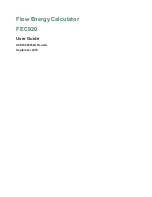
912
Appendix A: Functions and Instructions
squareMatrix1
x
ê
⇒
squareMatrix
Returns the inverse of
squareMatrix1
.
squareMatrix1
must be a non-singular square
matrix.
[1,2;3,4]^
ë
1
¸
[1,2;a,4]^
ë
1
¸
|
(“with”)
2
Í
key
expression
|
Boolean expression1 [and Boolean
expression2]...[and Boolean expressionN]
The “with” (|) symbol serves as a binary operator.
The operand to the left of | is an expression. The
operand to the right of | specifies one or more
relations that are intended to affect the
simplification of the expression. Multiple relations
after | must be joined by a logical “and”.
The “with” operator provides three basic types of
functionality: substitutions, interval constraints,
and exclusions.
x+1| x=3
¸
4
x+y| x=sin(y)
¸
sin(y)
+
y
x+y| sin(y)=x
¸
x
+
y
Substitutions are in the form of an equality, such
as
x=3
or
y=sin(x)
. To be most effective, the left
side should be a simple variable.
expression
|
variable
=
value
will substitute
value
for every
occurrence of
variable
in
expression
.
x^3
ì
2x+7
!
f(x)
¸
Done
f(x)| x=
‡
(3)
¸
‡
3
+
7
(sin(x))^2+2sin(x)
ì
6| sin(x)=d
¸
d
ñ
+2d
ì
6
Interval constraints take the form of one or more
inequalities joined by logical “and” operators.
Interval constraints also permit simplification that
otherwise might be invalid or not computable.
solve(x^2
ì
1=0,x)|x>0 and x<2
¸
x
=
1
‡
(x)
ù
‡
(1/x)|x>0
¸
1
‡
(x)
ù
‡
(1/x)
¸
1
x
ø
x
Exclusions use the “not equals” (/= or
ƒ
)
relational operator to exclude a specific value
from consideration. They are used primarily to
exclude an exact solution when using
cSolve()
,
cZeros()
,
fMax()
,
fMin()
,
solve()
,
zeros()
, etc.
solve(x^2
ì
1=0,x)| x
ƒ
1
¸
x
=
ë
1
!
(store)
§
key
expression
!
var
list
!
var
matrix
!
var
expression
!
fun_name(parameter1,...)
list
!
fun_name(parameter1,...)
matrix
!
fun_name(parameter1,...)
If variable
var
does not exist, creates
var
and
initializes it to
expression
,
list
, or
matrix
.
If
var
already exists and if it is not locked or
protected, replaces its contents with
expression
,
list
, or
matrix
.
Hint:
If you plan to do symbolic computations
using undefined variables, avoid storing anything
into commonly used, one-letter variables such as
a, b, c, x, y, z, etc.
p
/4
!
myvar
¸
p
4
2cos(x)
!
Y1(x)
¸
Done
{1,2,3,4}
!
Lst5
¸
{1 2 3 4}
[1,2,3;4,5,6]
!
MatG
¸
[
1 2 3
4 5 6
]
"Hello"
!
str1
¸
"Hello"
Summary of Contents for Voyage 200
Page 36: ...Getting Started 36 D B D B Press Result ...
Page 45: ...Getting Started 45 3 0 D B D D B D Press Result ...
Page 46: ...Getting Started 46 D 2 0 0 2 D B Scroll down to October and press Press Result ...
Page 60: ...Getting Started 60 B D Press Result ...
Page 139: ...Previews 139 8 Complete the operation Press 2 d Steps and keystrokes Display 5 f 2 ...
Page 453: ...Differential Equation Graphing 453 ...
Page 468: ...Tables 468 ...
Page 777: ...Activities 777 ...
















































